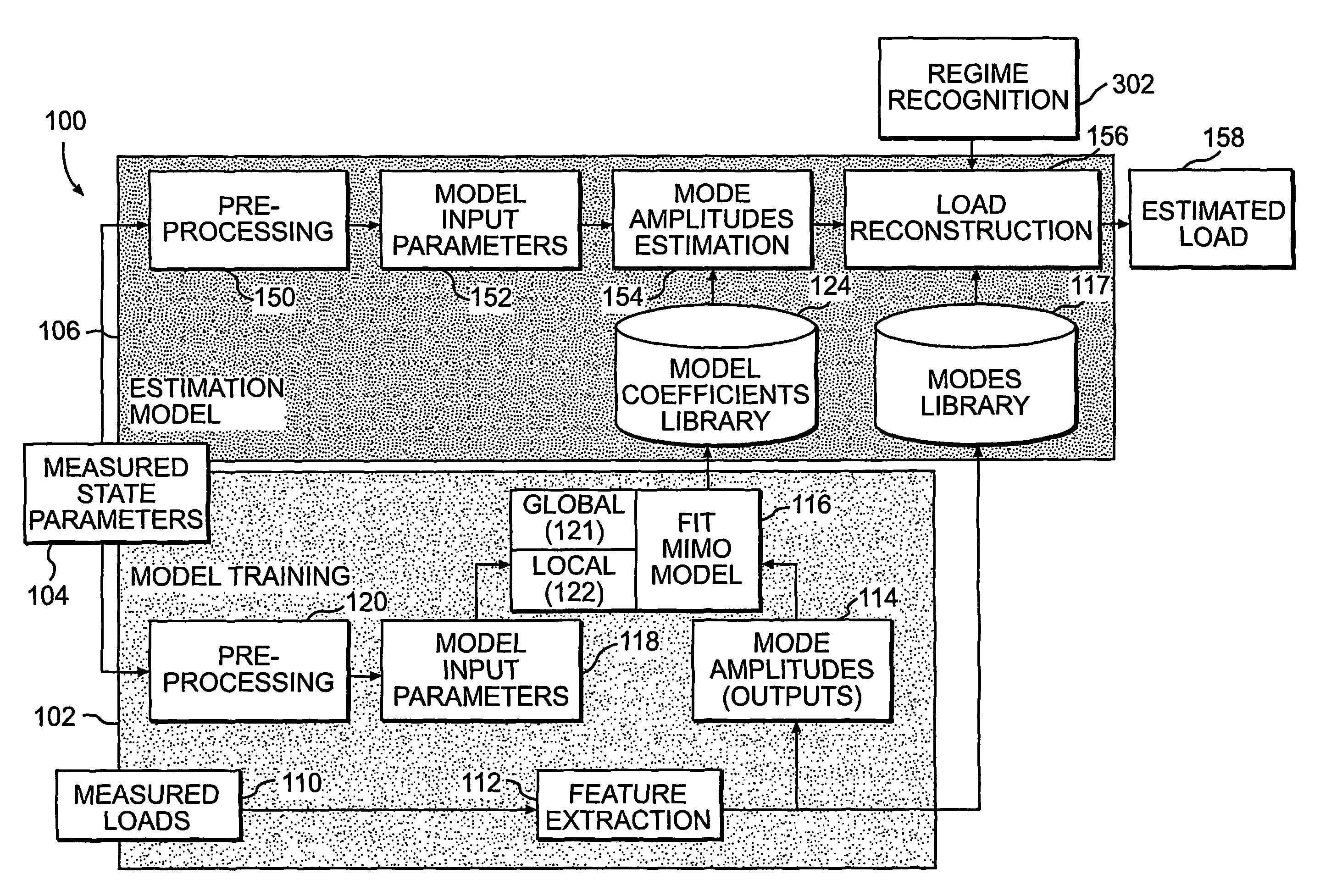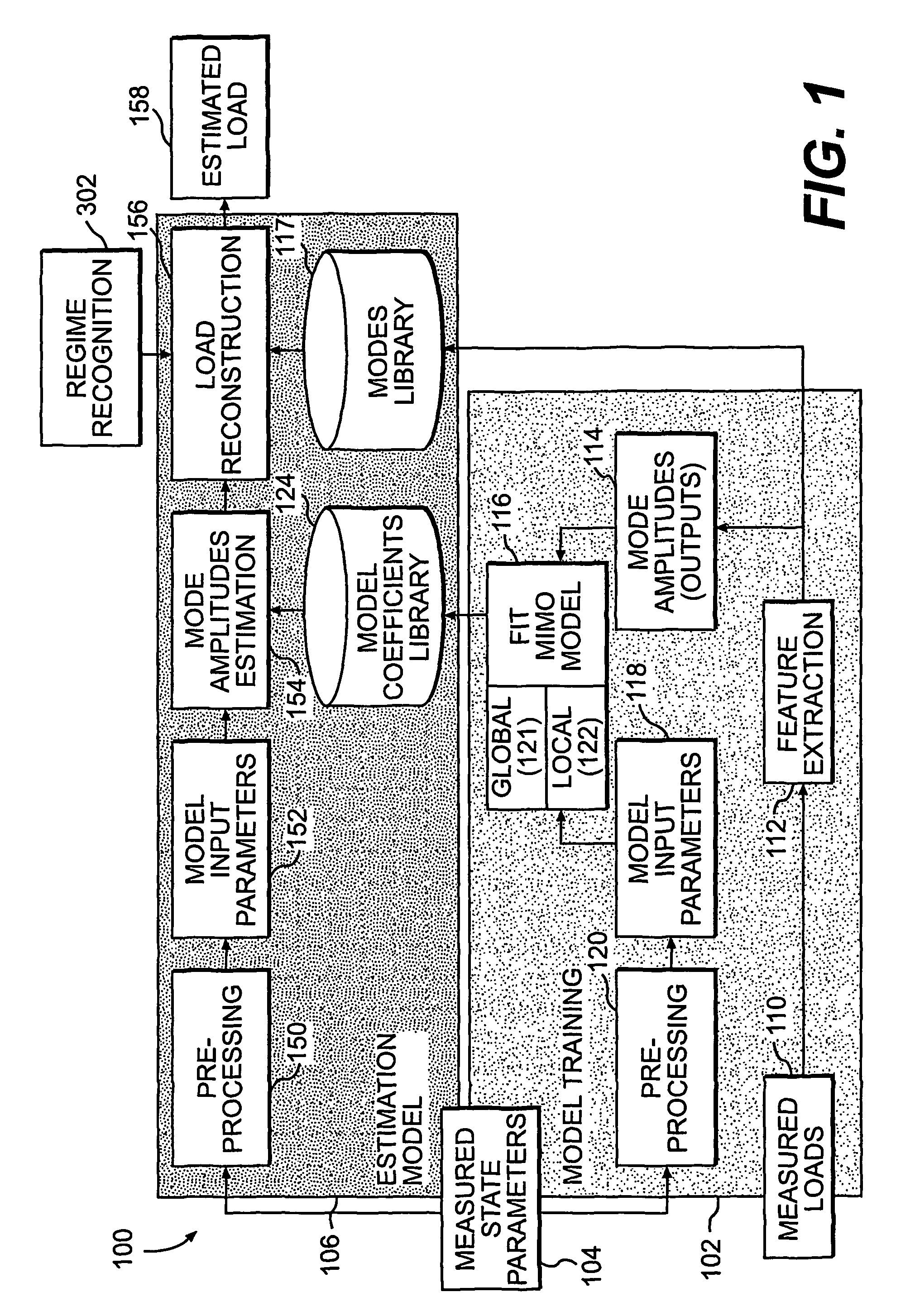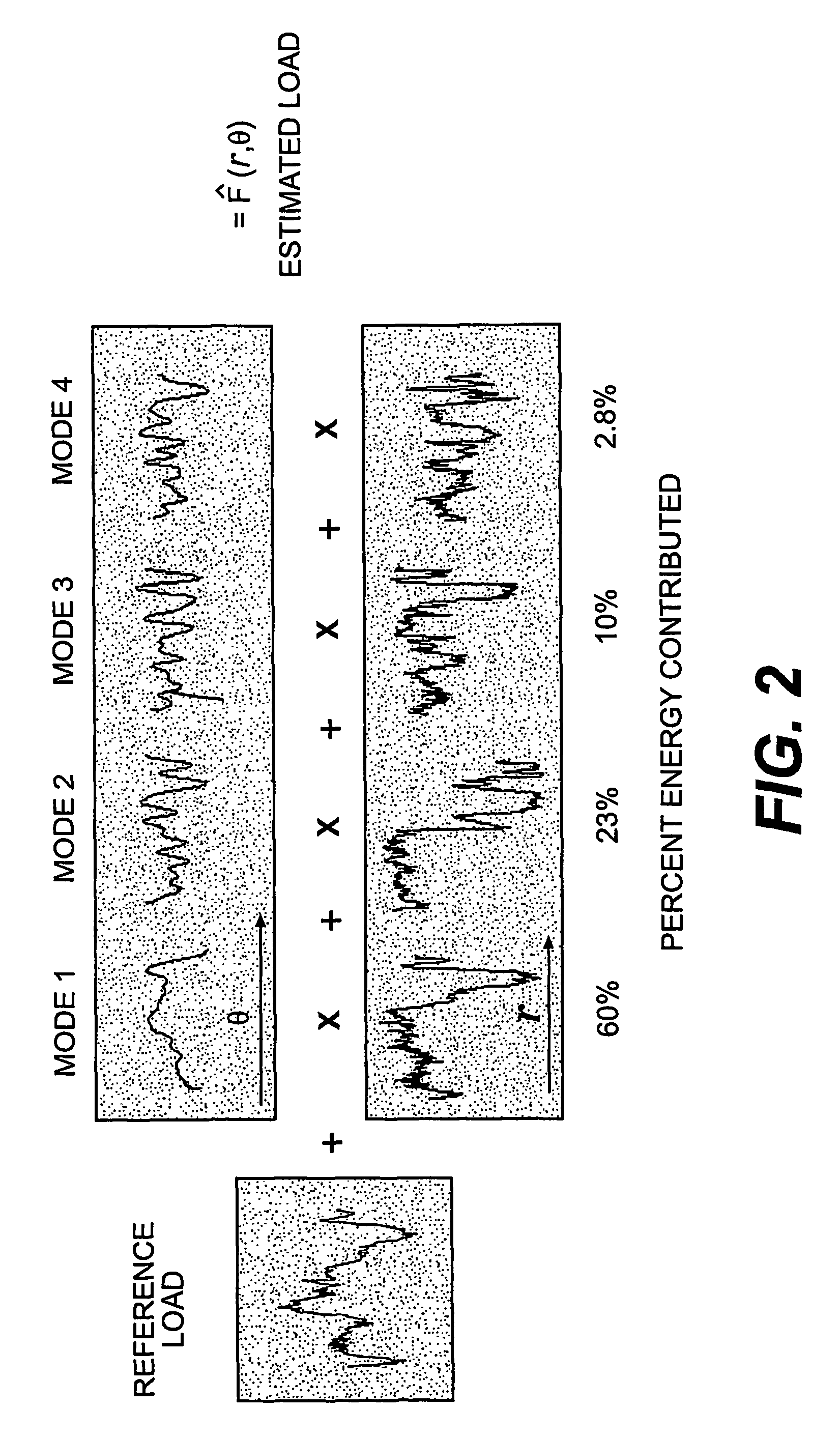Virtual load monitoring system and method
a load monitoring and virtual load technology, applied in the direction of testing/monitoring control systems, program control, instruments, etc., can solve the problems of parts that require service or replacement earlier than planned or parts that fail, designers tend to be conservative and over-design parts having properties, etc., to achieve the effect of convenient or more efficient obtaining
- Summary
- Abstract
- Description
- Claims
- Application Information
AI Technical Summary
Benefits of technology
Problems solved by technology
Method used
Image
Examples
Embodiment Construction
[0016]FIG. 1 illustrates one embodiment of an overall signal estimation process 100 according to one embodiment of the invention. Although the description below focuses on load estimations, it is to be understood that the system and process can be used in any application where accurate signal estimates are desired.
[0017]1. Overview of Signal Estimation Concept
[0018]Data corresponding to loads applied on a part or a part response to a load (collectively referred to as “loads” in this application) provides valuable information on how a component is being used. In many cases, however, it is difficult to obtain accurate load measurements of the part, particularly if the part is rotating or otherwise moving. Although there have been proposed methods for estimating loads generally, they have exhibited various problems.
[0019]Estimation techniques may be categorized according to their estimation capabilities and complexity, such as whether the estimation technique is linear or non-linear, s...
PUM
 Login to View More
Login to View More Abstract
Description
Claims
Application Information
 Login to View More
Login to View More - R&D
- Intellectual Property
- Life Sciences
- Materials
- Tech Scout
- Unparalleled Data Quality
- Higher Quality Content
- 60% Fewer Hallucinations
Browse by: Latest US Patents, China's latest patents, Technical Efficacy Thesaurus, Application Domain, Technology Topic, Popular Technical Reports.
© 2025 PatSnap. All rights reserved.Legal|Privacy policy|Modern Slavery Act Transparency Statement|Sitemap|About US| Contact US: help@patsnap.com



